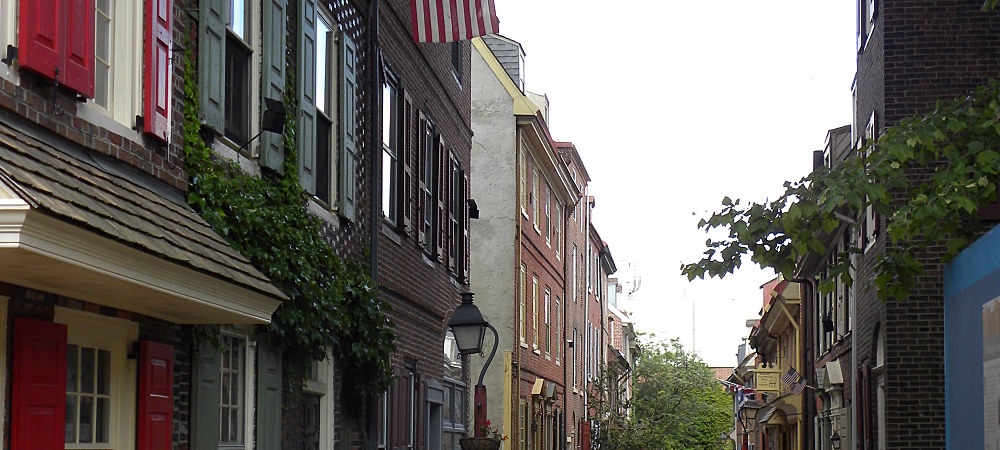Historic Homes in Philadelphia: What You Need to Know
Historic homes may look charming, but they can also mean a lot of headache and a lot of making sure your house follows the rules. Learn what’s involved in buying and maintaining a historic house before you decide if it’s the right pick for you.
Strolling down Elfreth’s Alley in Philadelphia’s Old City, you might find yourself dreaming of living in one of the historic homes on the block. While older homes have their charms, historical properties come with a lot of rules and red tape. Plus, the age of the home might mean that it needs a lot of maintenance right from the beginning. Before you decide that a historic home is the one for you, do your research and find out about the city’s rules, as well as much as you can about the property.
Understand the Goals
The goal of having historic homes and districts in Philadelphia is to preserve some or most of the character of the homes and areas. According to the Rittenhouse Fitler Historic District Manual, the rules of a historic district help protect it and its homes from demolition, incongruous changes, and from unbound new construction. Which means that you may not have the freedom to add on to your historic home or to change the facade or roof of the house as much as you’d like, but that’s part of the point of owning a piece of history.
Understand the Rules
Owning a historic home in Philadelphia doesn’t necessarily mean that you can’t make any changes to the exterior of the home. It simply means that you need to get approval from the Historical Commission before you make the changes. You also need a permit from Licenses and Inspections, but odds are likely you’d need that for any home in the city.
You typically only need permission and approval when you want to make changes to the exterior of the home. For the most part, any interior changes you want to make, such as painting the walls bright yellow or adding carpet, is fine. Interior changes will typically only be visible to people invited into the home and won’t impact the character of the neighborhood.
Usually, if you want to change something on the exterior of the home in some way, you’ll need to use specific materials. For example, if your home is in the Rittenhouse area, you may need to use slate on the roof, as many older roofs originally had slate tiles. Slate is more expensive that other materials, but it’s an important element when it comes to preserving the historic character of the home. The Rittenhouse Manual points out that it’s pricier up front, but can last longer than more modern materials.
Maintaining the Home
Historic homes in Philadelphia typically require more maintenance than the average home. For example, you should inspect your roof several times a year to prevent leaks or to keep the gutters from leaking. You may need to clean the masonry on the facade of the house yearly and check the flashing to keep it watertight. Water and leaks can damage the structure of the home, meaning you need to spend a considerable sum of money to repair the property if it gets to that stage. It’s better to keep up with maintenance than have to deal with replacements and repairs.
When looking at historic homes in Philly, remember to hire a home inspector who has experience evaluating such homes. It’s best to make sure the home is in relatively decent shape before you invest in it, to save you both money and headaches down the road.
Image Source: Flickr/Jason Paris
[cf]skyword_tracking_tag[/cf]





4 Comments
Historic Homes in Philadelphia: What You Need to Know | Janet Glowacki's Blog
July 29, 2014[…] post Historic Homes in Philadelphia: What You Need to Know appeared first on Coldwell Banker Blue […]
Historic Homes in Philadelphia: What You Need to Know | Donna Dagley's Blog
July 29, 2014[…] Historic homes in Philadelphia typically require more maintenance than the average home. For example, you should inspect your roof several times a year to prevent leaks or to keep the gutters from leaking. You may need to clean the masonry on the facade of the house yearly and check the flashing to keep it watertight. Water and leaks can damage the structure of the home, meaning you need to spend a considerable sum of money to repair the property if it gets to that stage. It’s better to keep …read more […]
Historic Homes in Philadelphia: What You Need to Know | My Website
July 29, 2014[…] Historic Homes in Philadelphia: What You Need to Know […]
Masonry Contractors
November 9, 2017Philly has some beautiful homes that are made with brick!